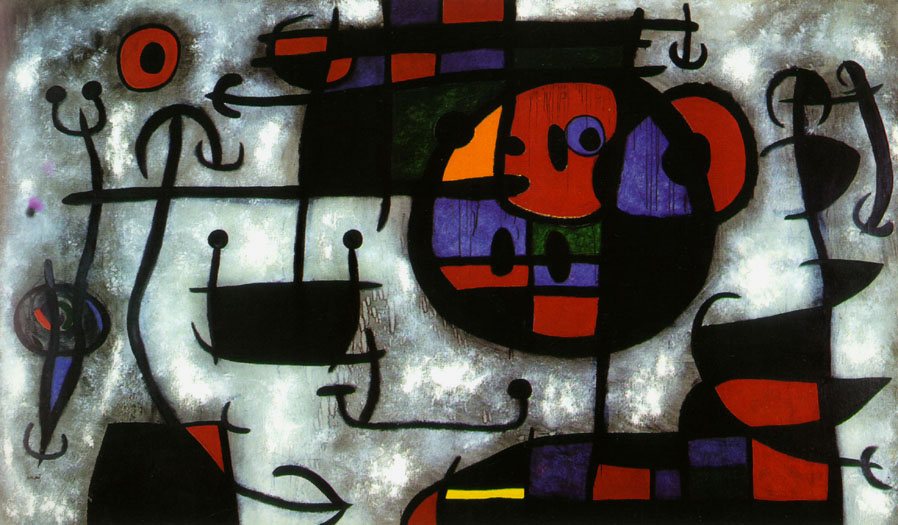Word of the Day
MIRO (meer-OH)
Joan Miro: Spanish painter, sculptor, and ceramist
Common clues: Joan of art; Surrealist Joan; Muralist Joan; "Blue II" painter, 1961; "Dog Barking at the Moon" painter; Spanish painter Joan
Crossword puzzle frequency: 4 times a year
Frequency in English language: 41436 / 86800
Video: Joan Miro
Joan Miró i Ferrà (April 20, 1893 – December 25, 1983); was a Spanish Catalan painter, sculptor, and ceramist born in Barcelona.

Portrait
of Joan Miro, Barcelona 1935
Earning international acclaim, his work has been interpreted as Surrealism, a sandbox for the subconscious mind, a re-creation of the childlike, and a manifestation of Catalan pride. In numerous interviews dating from the 1930s onwards, Miró expressed contempt for conventional painting methods as a way of supporting bourgeoise society, and famously declared an "assassination of painting" in favor of upsetting the visual elements of established painting.
Miró was among the first artists to develop automatic drawing as a way to undo previous established techniques in painting, and thus, with André Masson, represented the beginning of Surrealism as an art movement. However, Miró chose not to become an official member of the Surrealists in order to be free to experiment with other artistic styles without compromising his position within the group. He pursued his own interests in the art world, ranging from automatic drawing and surrealism, to expressionism and Color Field painting.

La
Leçon de Ski 1966, by Joan Miró.
Miró's oft-quoted interest in the assassination of painting is derived from a dislike of bourgeois art of any kind, used as a way to promote propaganda and cultural identity among the wealthy. Specifically, Miró responded to Cubism in this way, which by the time of his quote had become an established art form in France. He is quoted as saying "I will break their guitar," referring to Picasso's paintings, with the intent to attack the popularity and appropriation of Picasso's art by politics.
"The spectacle of the sky overwhelms me. I'm overwhelmed when I see, in an immense sky, the crescent of the moon, or the sun. There, in my pictures, tiny forms in huge empty spaces. Empty spaces, empty horizons, empty plains - everything which is bare has always greatly impressed me." - Joan Miró, 1958, quoted in Twentieth-
In an interview with biographer Walter Erben, Miró expressed his dislike for art critics, saying, they "are more concerned with being philosophers than anything else. They form a preconceived opinion, then they look at the work of art. Painting merely serves as a cloak in which to wrap their emaciated philosophical systems."
Four-dimensional painting is a theoretical type of painting Miró proposed in which painting would transcend its two-dimensionality and even the three-dimensionality of sculpture.
In the final decades of his life Miró accelerated his work in different media, producing hundreds of ceramics, including the Wall of the Moon and Wall of the Sun at the UNESCO building in Paris. He also made temporary window paintings (on glass) for an exhibit. In the last years of his life Miró wrote his most radical and least known ideas, exploring the possibilities of gas sculpture and four-dimensional painting.
In 1974, Miró created a tapestry for the World Trade Center in New York City. He had initially refused to do a tapestry, then he learned the craft and produced several. His World Trade Center Tapestry was displayed for many years at World Trade Center building. It was one of the most expensive works of art lost during the attack of the twin towers.[
This article is licensed under the GNU Free Documentation License. It uses material from the Wikipedia article "Miro".
|
|